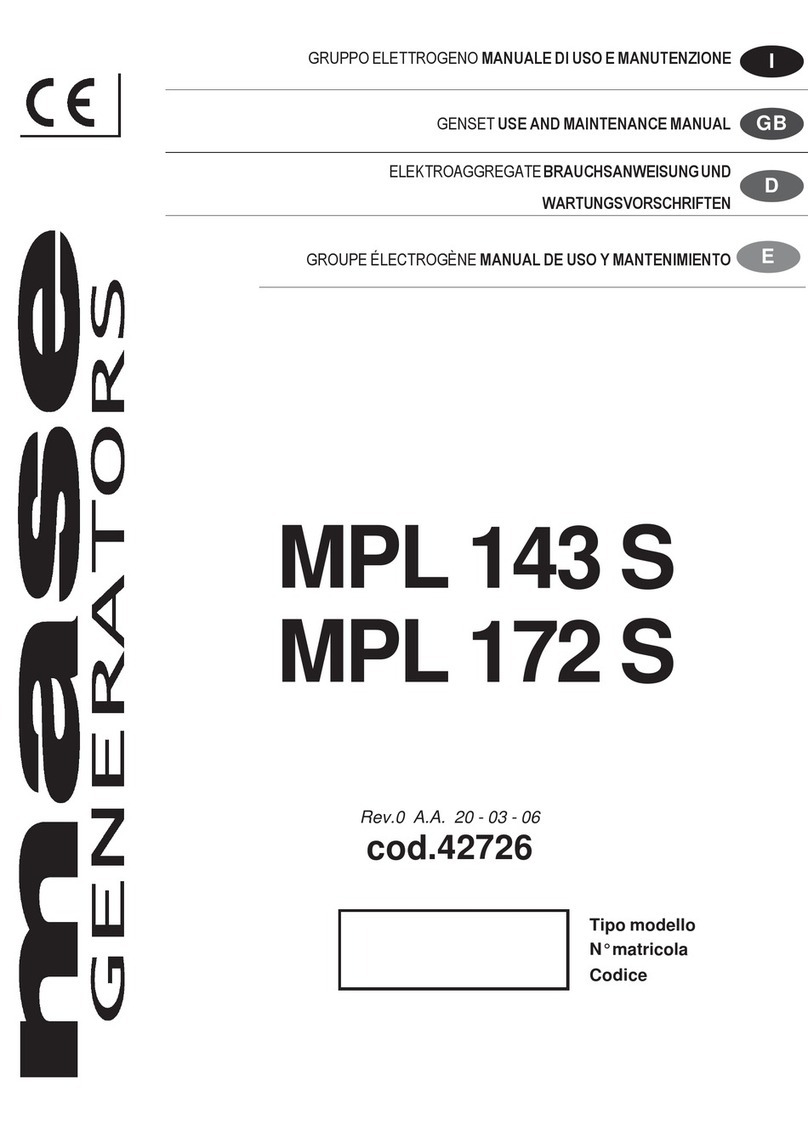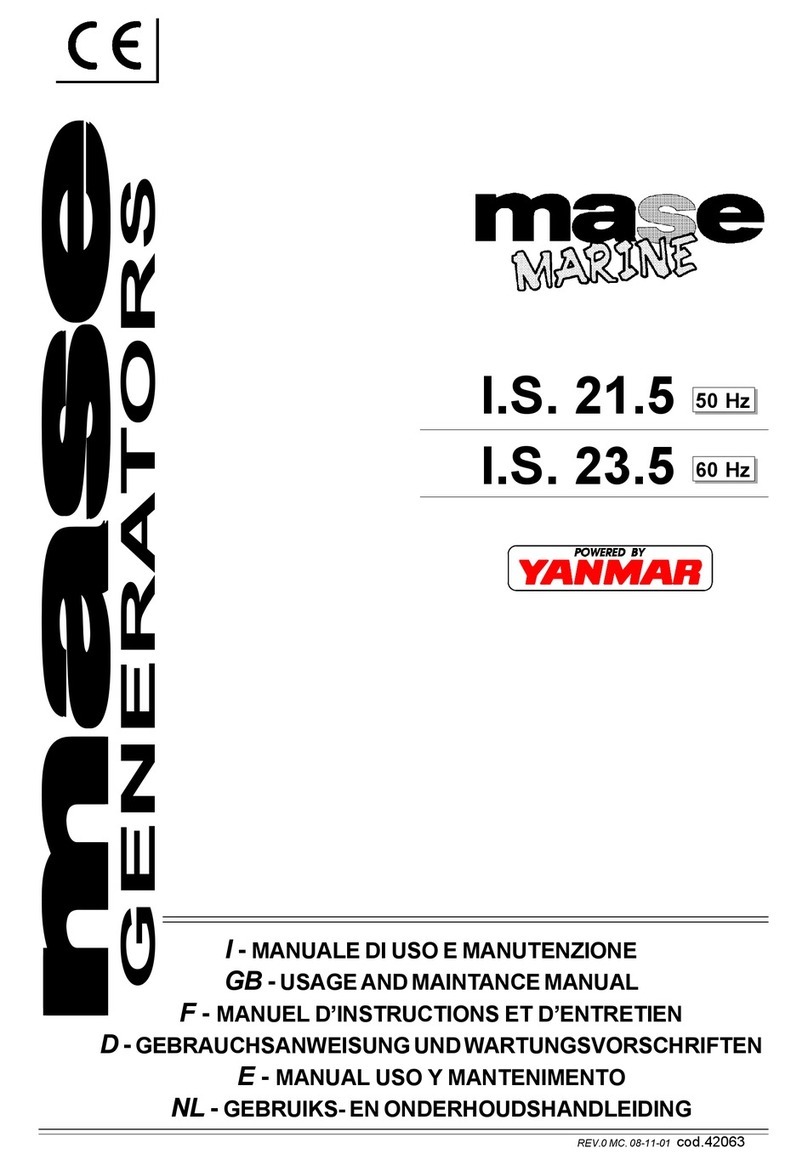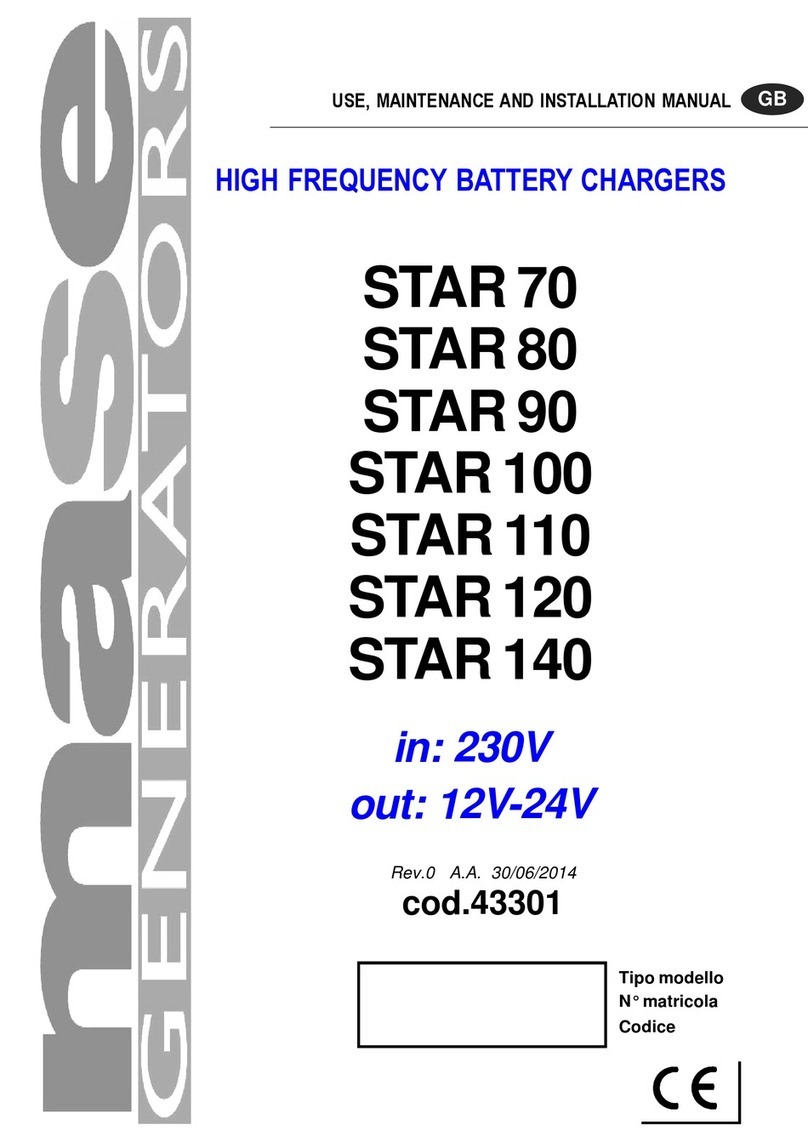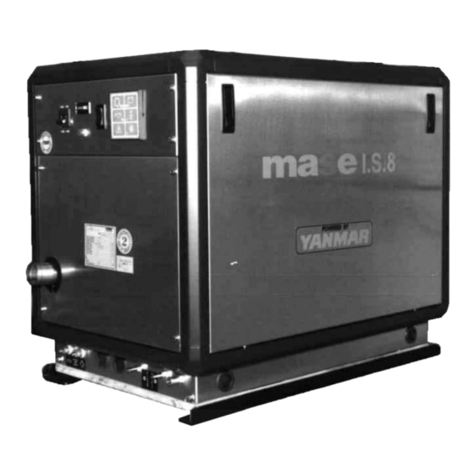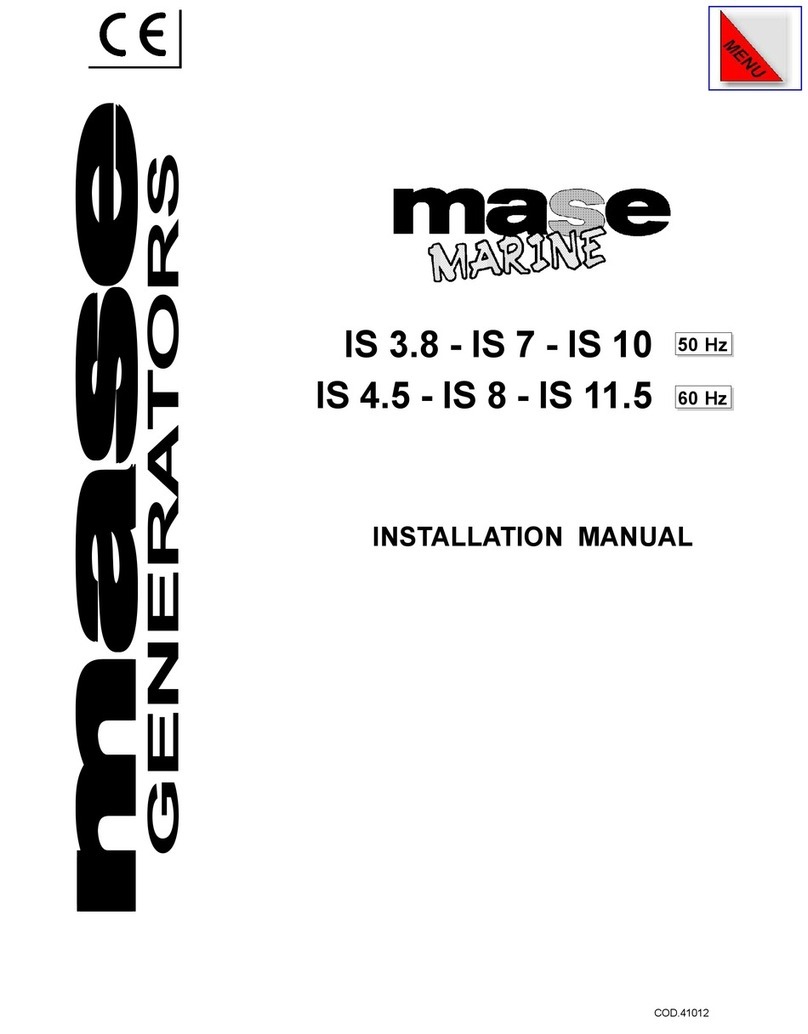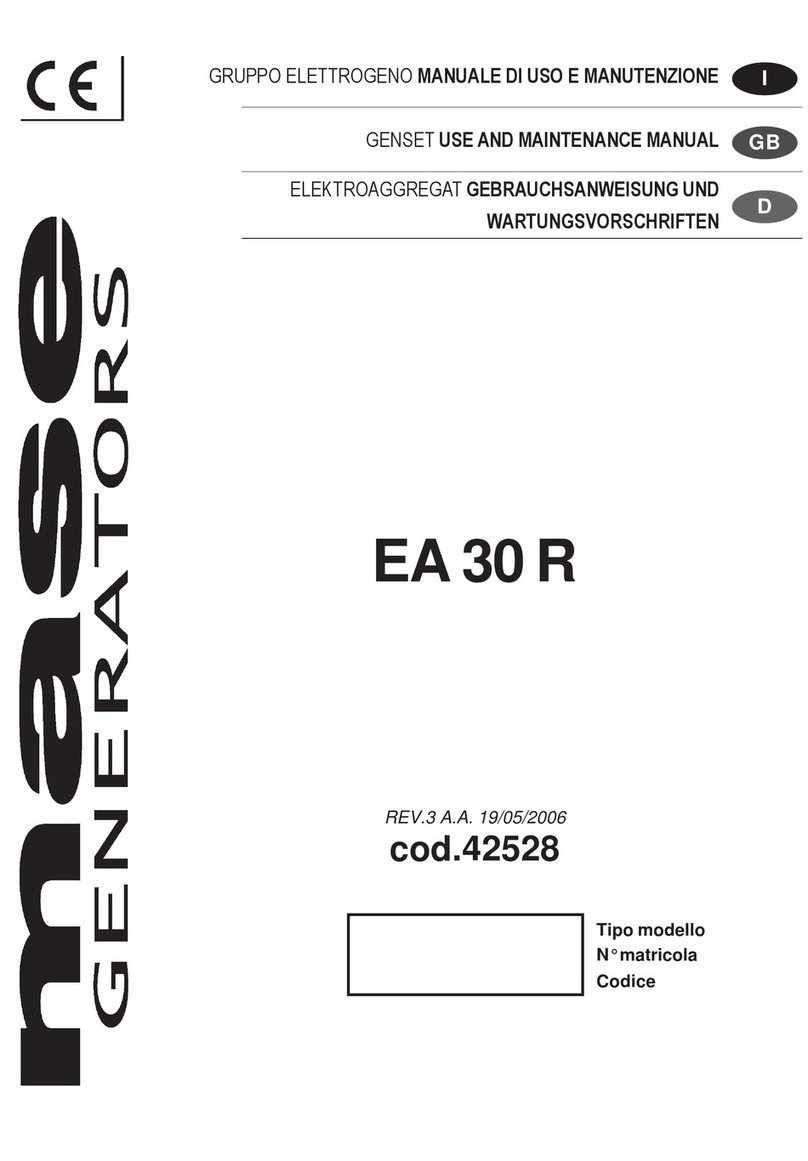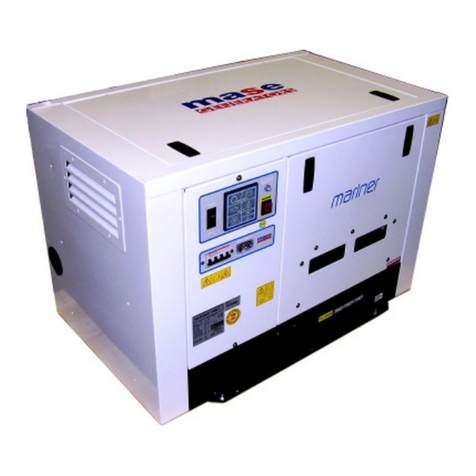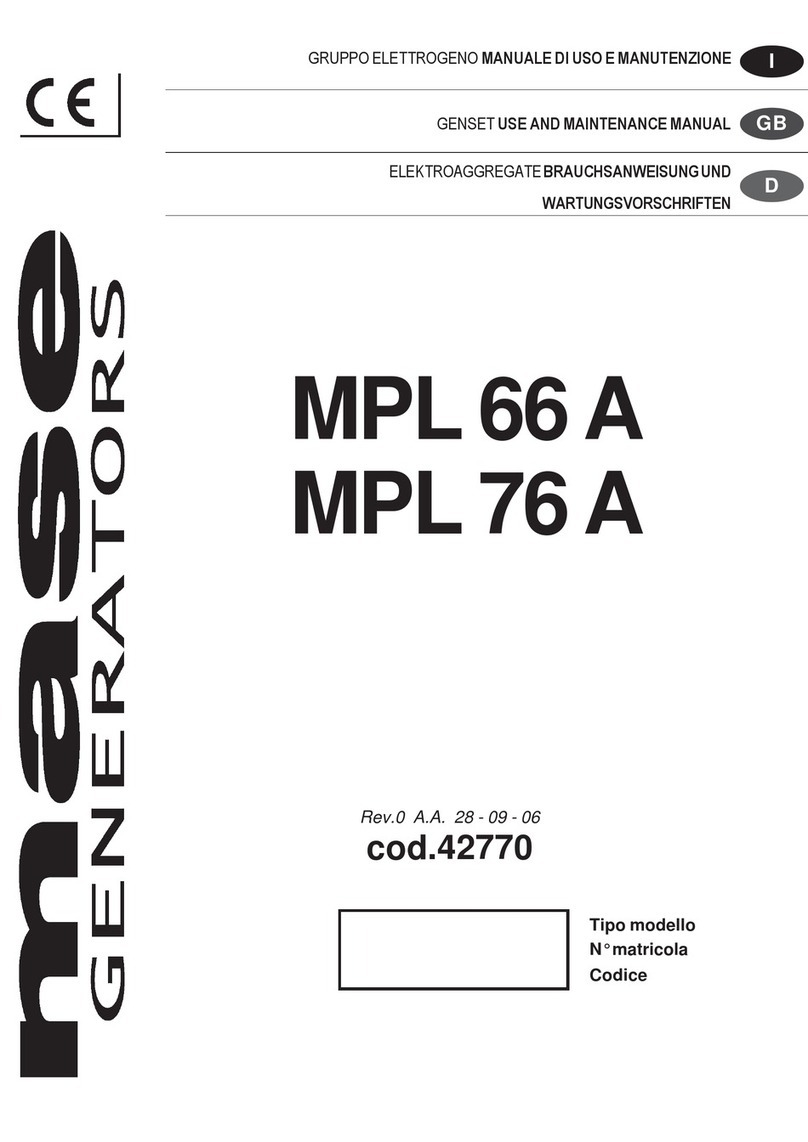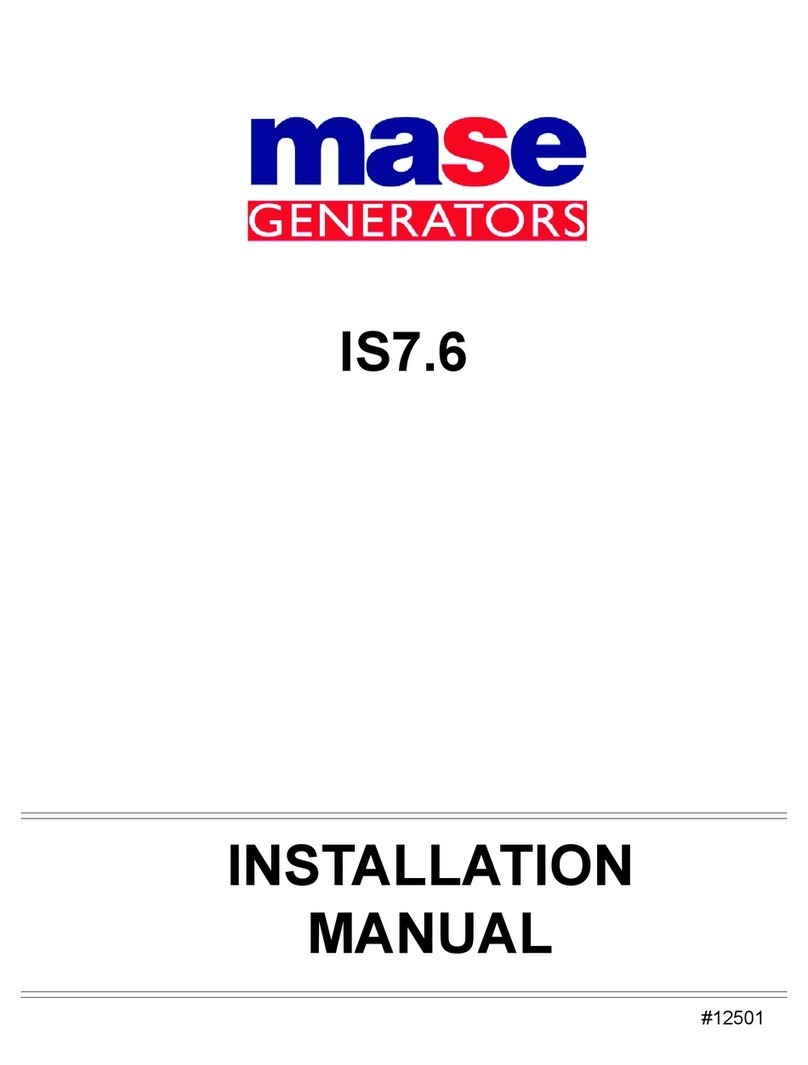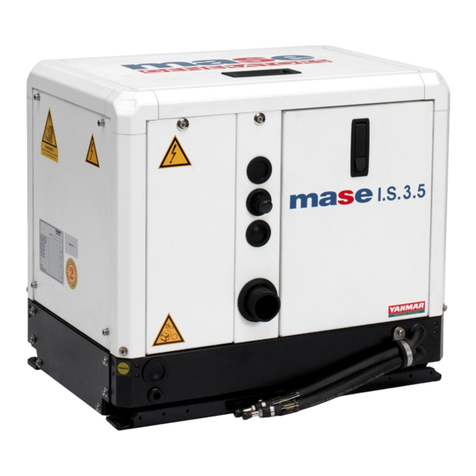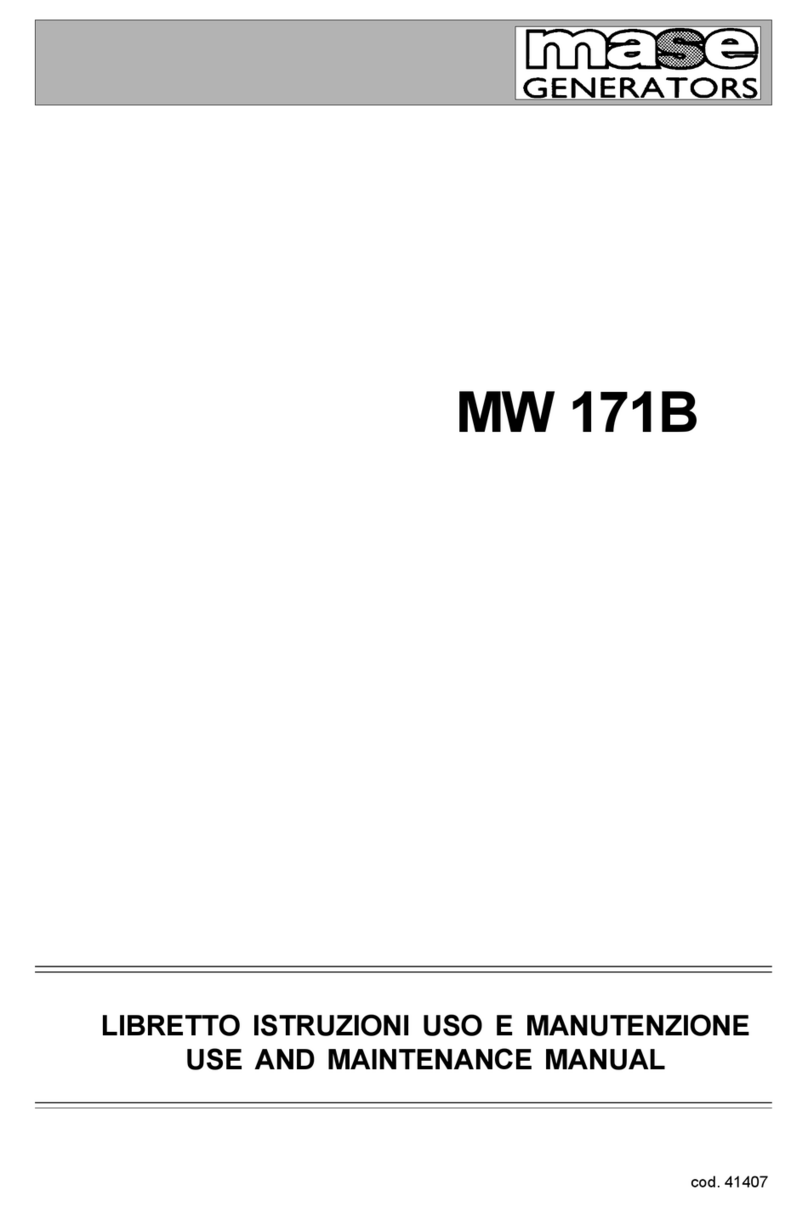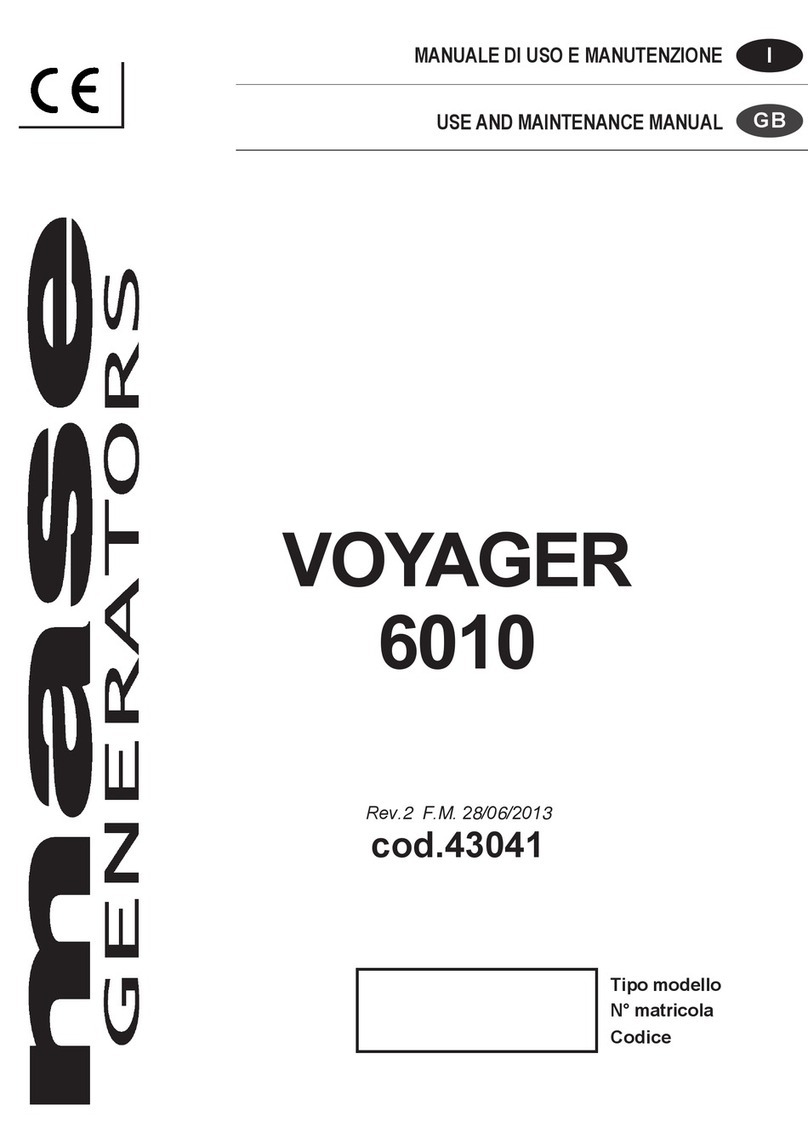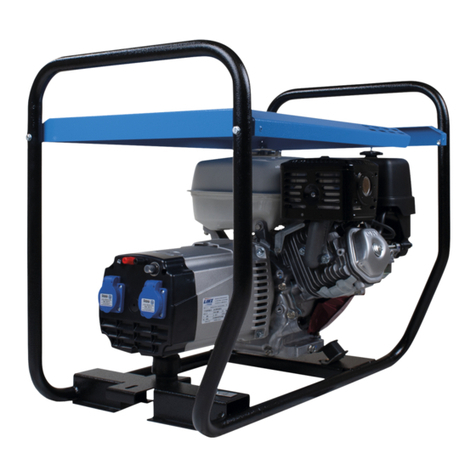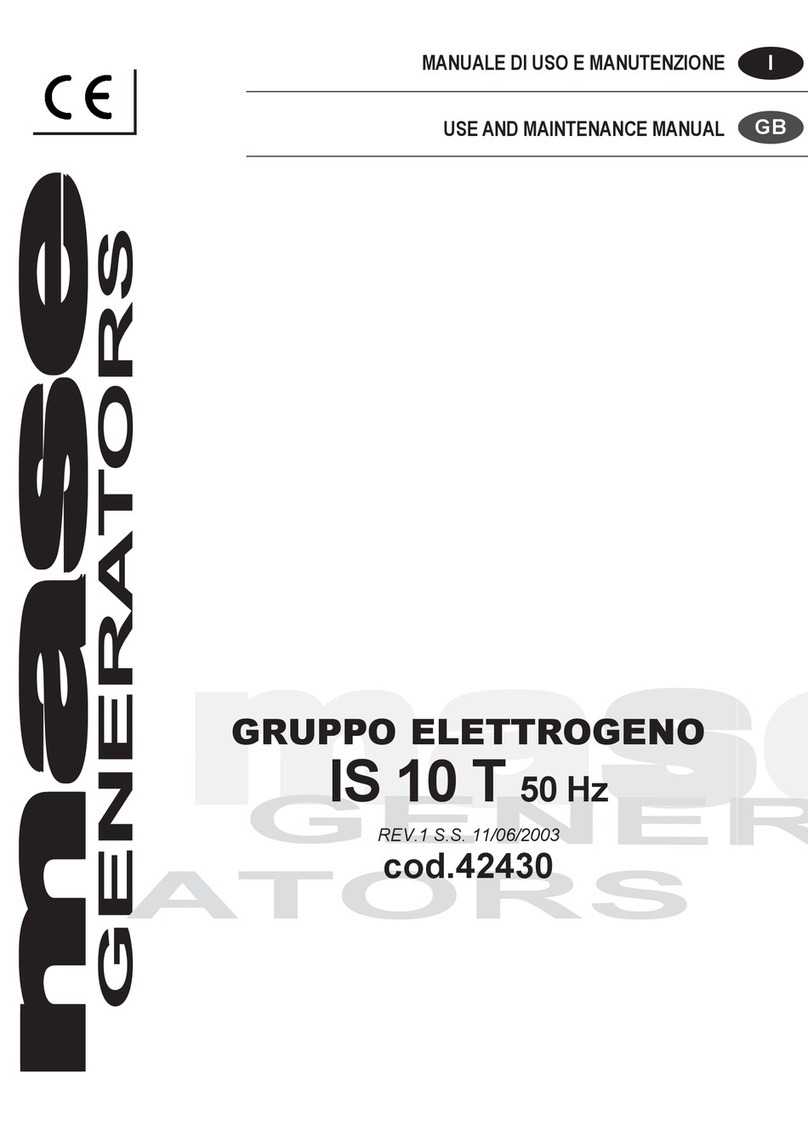
5
1. INSTALLATION
1.1 ERK ALE
VOYAGER ist ein Generator,
der für die Montage in
Automobilen konstruiert wurde,
er kann jedoch auch an einem
festen Ort installiert werden
Dabei ist allerdings darauf zu
achten, daß die Ansaug- und
Auslaßöffnungen für die Kühlluft
nicht versperrt werden Der
Schutz gegen das Eindringen
von Wasser und Fremdkörpern
entspricht der Schutzart IP34
und ermöglicht die Benutzung
des Aggregates im Freien, auch,
wenn es dort Spritzwasser und
Regen ausgesetzt ist Betrieben
wird es mit flüssigkeitsgekühlten
Dieselmotoren mit Kraftstoff-
pumpe und Filtersystemen
Am Aggregat ist eine Bedientafel
angeschlossen, die im Inneren
des Wagens installiert werden
kann, und die die Funktionen
Start - Stop und die
Schutzfunktionen handhabt.
1.2 BELÜFTUNG
Der VOYAGER-Generator ist
mit einem internen Flüssigkeits-
und Luftleit-Kühlsystem
ausgestattet Die zur Kühlung
und für die Verbrennung
notwendige Luft wird durch zwei
verschiedene Roste in das
schallgedämpfte Gehäuse (Abb
1, Pos 1) gesaugt: einer
befindet sich an der
Verschlußklappe (Abb 1, Pos
3), und ein zweiter sitzt an der
Hinterseite des Gehäuses (Abb
2, Pos 6); die Abluft wird durch
den Abluftrost an der
Verschlußklappe (Abb 1, Pos
4) abgeleitet Für das ordnungs-
gemäße Funktionieren des
Aggregates ist es außerord-
entlich wichtig, daß die Ansau-
groste und der Abluftrost immer
frei sind und sich nicht in der
Nähe von Wärmequellen
befinden
1. INSTALACION
1.1 CARACTERÍSTICAS
La VOYAGER es una unidad
electrógena proyectada para ser
instalada a bordo de vehículos
pero puede ser también utilizada
en posición fija, cuidando dejar
libres las aberturas de aspiración
y descarga del aire de
enfriamiento
El grado de protección contra el
agua y la entrada de cuerpos
extraños corresponde a IP34, lo
que permite el uso de la unidad
al aire libre y en presencia de
chorros de agua y de lluvia Los
motores empleados son diesel,
enfriados mediante líquido, con
bomba de carburante y sistemas
de filtración
La unidad está conectada a un
panel de mandos que puede ser
instalado al interior del vehículo
y que permite gobernar las
funciones de arranque - parada
y las protecciones de
seguridad
1.2 VENTILACIÓN
La unidad electrógena
VOYAGER dispone de un siste-
ma interno de enfriamiento me-
diante líquido y aire de circu-
lación forzada El aire, necesario
para el enfriamiento y la combu-
stión, es aspirado al interior de
la caja insonorizante (fig 1 ref 1)
a través de dos diferentes rejil-
las, una situada en la portezuela
de cierre (fig 1 ref 3) y la segun-
da instalada en la parte posterior
de la caja (fig 2 ref 6); el aire es
expulsado a través de la rejilla
de descarga situada en la
portezuela de cierre (fig 1 ref 4)
Para un adecuado funciona-
miento de la unidad es de
fundamental importancia que las
rejillas de aspiración y descarga
se encuentren siempre libres de
todo obstáculo y en posición
alejada de fuentes de calor
1. INSTALLATION
1.1 CARACTERISTIQUES
VOYAGER est un groupe
électrogène conçu pour être
installé à bord des véhicules
automobiles, toutefois, il peut
aussi être utilisé dans un
emplacement fixe en prenant
soin de laisser les ouvertures
daspiration et dévacuation de
lair de refroidissement libres
Le degré de protection IP34
contre leau et lintroduction de
corps étrangers permet lutili-
sation du groupe en plein air et
en présence décla-boussures
deau et de pluie Les moto-
risations utilisées sont diesel,
refroidies par liquide, complétées
de pompe carburant et de
systèmes filtrants
Le groupe est relié à un pupitre
de commandes qui peut être
installé à lintérieur du véhicule,
ce groupe gère les fonction de
démarrage - arrêt ainsi que
les protections de sécurité.
1.2 VENTILATION
Le groupe électrogène
VOYAGER est doté dun
système interne de refroidis-
sement par liquide et à air forcé
Lair nécessaire au refroidis-
sement et à la combustion est
aspiré à lintérieur du carénage
insonorisant (Fig 1 Réf 1) à
travers deux grilles différentes :
une première située sur le
portillon de fermeture (Fig 1 Réf
3) et une seconde située sur le
côté arrière du carénage (Fig 2
Réf 6) et expulsé à travers la
grille dévacuation située sur le
portillon de fermeture (Fig Réf
4) Pour le bon fonctionnement
du groupe, il est extrêmement
important que les grilles daspi-
ration et dévacuation soient
toujours libres et éloignées de
toute source de chaleur
